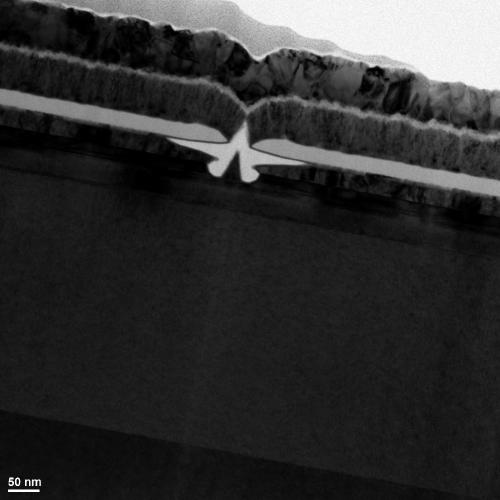

The compound transistor, built by a team in MIT's Microsystems Technology Laboratories, performs well despite being just 22 nanometers (billionths of a meter) in length. This makes it a promising candidate to eventually replace silicon in computing devices, says co-developer Jesús del Alamo, the Donner Professor of Science in MIT's Department of Electrical Engineering and Computer Science (EECS), who built the transistor with EECS graduate student Jianqian Lin and Dimitri Antoniadis, the Ray and Maria Stata Professor of Electrical Engineering.
To keep pace with our demand for ever-faster and smarter computing devices, the size of transistors is continually shrinking, allowing increasing numbers of them to be squeezed onto microchips. "The more transistors you can pack on a chip, the more powerful the chip is going to be, and the more functions the chip is going to perform," del Alamo says.
But as silicon transistors are reduced to the nanometer scale, the amount of current that can be produced by the devices is also shrinking, limiting their speed of operation. This has led to fears that Moore's Law—the prediction by Intel founder Gordon Moore that the number of transistors on microchips will double every two years—could be about to come to an end, del Alamo says.
To keep Moore's Law alive, researchers have for some time been investigating alternatives to silicon, which could potentially produce a larger current even when operating at these smaller scales. One such material is the compound indium gallium arsenide, which is already used in fiber-optic communication and radar technologies, and is known to have extremely good electrical properties, del Alamo says. But despite recent advances in treating the material to allow it to be formed into a transistor in a similar way to silicon, nobody has yet been able to produce devices small enough to be packed in ever-greater numbers into tomorrow's microchips.
Read more at: http://phys.org/news/2012-12-smallest-indium-gallium-arsenide-transistor.html